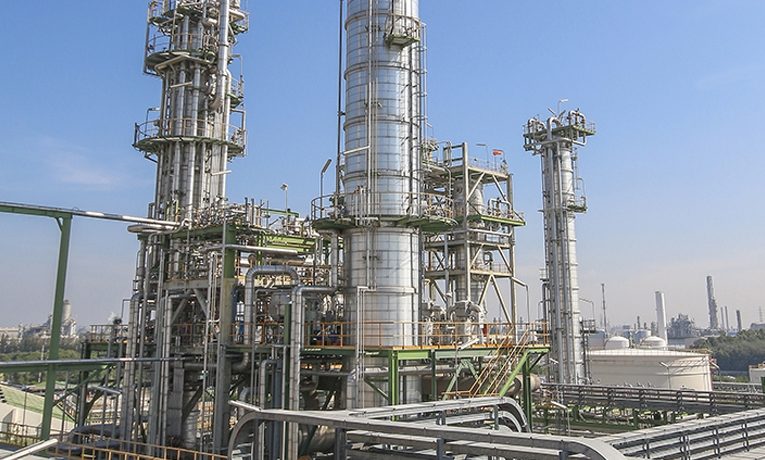As today's global economy becomes more competitive, perhaps no other industry has felt the impact more so than that of oil refining. As oil consumption and demand continue to expand worldwide, markets shift and companies find themselves in need of the most pertinent and up-to-date information available. While numerous reports shed light on current and future market trends and conditions, one of the more valuable and easy to understand tools now available is Solomon’s Cost of Transportation Fuels (CTF) report. CTF has proven to be extremely effective over the years at identifying "at-risk" refineries, providing clients the opportunity to solve problems before it becomes too late.
Solomon first began analyzing CTF in 2010 as a tool to help refiners answer a variety of questions, such as:
- How do you compare to other refineries with similar capacity and complexity in your region and to those around the world?
- Are you operating efficiently and effectively enough to fend off any outside competition?
- Do you know which of your refineries justify a greater financial investment and which of them are no longer feasible?
Given that economic instability in various parts of the world can negatively impact the refining industry, having as many facts and figures as possible to determine what it will take to survive the next downturn in these regions is crucial to your success.
Leading the Way
Simply put, CTF is a metric resulting from a simple calculation. We take all feedstock and operating costs and divide them by the volume of a defined set of products that represent transportation fuels. However, because CTF involves many important factors (e.g., raw material costs, operating expenses, and transportation fuels volume), it is important to look beyond just the numbers. Generally speaking, the following factors provide us the means to effectively use CTF as an “inside the fence” measurement and diagnostic tool:
- Raw Material Price, USD/bbl
- By-Product Price, USD/bbl
- Raw Material Volume, bbl
- By-Product Volume, bbl
- Operating Cost, USD/bbl
- Transportation Fuels Volume, bbl
Keep in mind that CTF is a strategic metric that does not require any additional data collection beyond normal Solomon Fuels Study participation, highlighting Solomon’s commitment to create new operating and strategic metrics.
2014 Case Study
Imagine a “middle of the pack” refinery located in Western Europe. Refinery owners are concerned about imports from both the US Gulf Coast (USGC) and the Middle East (ME). They want to know their competitive position. Simply put, how do they compare to other refineries within their own region (i.e., Western Europe) as well as to international competition from the USGC and ME?
CTF can not only be used to look at the competitiveness of a refinery’s inside the fence operations—looking at regional competition or refineries of similar size and complexity (internal benchmarking)—it can also be taken beyond the refinery fence boundary to become a strategic competitive measure (external benchmarking).
Employing the following four-step process, we move beyond the refinery fence to fully capture the benefits of a CTF analysis:
-
Calculate the inside the fence CTF.
-
Transport all the transportation fuels to a common market location.
-
Sell the mix of transportation fuels at market prices for the common location.
-
Calculate the margin.
We can now rank this margin against the margin for regional and import competitors, with all margins based on the same common market location.
In our case study, we moved the transportation fuels for our Western Europe middle of the pack refinery to Rotterdam, sold the products, and calculated the margin. The results were then compared to the CTF margin for other Western Europe refineries and refineries in the USGC and the Middle East, all based on transporting and selling products into the Rotterdam market.
The analysis yielded a wide range of Rotterdam-based CTF margins and an indication our Western Europe middle of the pack refinery was under threat from imports. The threat was even more significant under a different pricing scenario where diesel fuel price decreases relative to gasoline price.
The analysis revealed some significant findings:
- Refineries with access to low-cost shale have the lowest inside the fence CTF.
- Refining configurations have been optimized for certain markets; as a result, refineries configured for gasoline tend to fall in the rankings when using Rotterdam market prices to determine margins.
- Refineries that produce relatively little transportation fuels can still survive if they produce other products with a high value or are viewed as a “feeder” to other more complex refineries or petrochemical facilities.
- Some refineries simply do not have the yield structure to compete with imports, putting them at risk of falling behind their competitors.
CTF Reports and Differentiation
Due to the data in a CTF report being so specific relative to an individual refinery, one of its most important aspects involves differentiation. Because most benchmarking reports focus on internal aspects of a refinery, there are other crucial details refineries need to know to stay competitive in today's oil market. Because of this, CTF reports not only provide internal information, they also compare the refinery to others in their given market. Known as reporting "beyond the fence line," the CTF report can use the most up-to-date metrics available within the industry to show how a refinery ranks relative to its peers.
What You Need to Know
In trying to determine the best course of action for your refinery, there are several vital questions that must be asked, such as:
More and more refineries are turning to a CTF report for answers and to help accomplish their goals. By showing which regions of the world rank the best, why CTF performance creates threats as well as opportunities, providing case studies to assess vulnerabilities, and examining the inner workings of CTF and what makes it so important to your refinery, you will find this form of research analysis can help your refinery make tremendous strides in national and international markets.
Why Work with Solomon?
Even though it may be possible to obtain bits and pieces of this information from various sources, no company provides such a thorough and knowledgeable assessment of your refinery's situation than Solomon. Further, as one of the leading providers of benchmarking services, Solomon has access to data that is unavailable from other vendors and suppliers. This data makes our reporting especially valuable.

.jpg)







.jpg)
-updated.jpg)
-updated.jpg)
.jpg)
.jpg)
-updated.jpg)
-updated.jpg)
.jpg)
.jpg)
.jpg)


.jpg)
.jpg)
.jpg)
.jpg)
.jpg)
.jpg)
.jpg)
.jpg)
.jpg)
.jpg)
.jpg)
.jpg)
.jpg)
.jpg)